+Search query
-Structure paper
| Title | Spike structures, receptor binding, and immune escape of recently circulating SARS-CoV-2 Omicron BA.2.86, JN.1, EG.5, EG.5.1, and HV.1 sub-variants. |
|---|---|
| Journal, issue, pages | Structure, Vol. 32, Issue 8, Page 1055-11067.e6, Year 2024 |
| Publish date | Aug 8, 2024 |
 Authors Authors | Linjie Li / Kaiyuan Shi / Yuhang Gu / Zepeng Xu / Chang Shu / Dedong Li / Junqing Sun / Mengqing Cong / Xiaomei Li / Xin Zhao / Guanghui Yu / Songnian Hu / Hui Tan / Jianxun Qi / Xiaopeng Ma / Kefang Liu / George F Gao /  |
| PubMed Abstract | The recently emerged BA.2.86, JN.1, EG.5, EG.5.1, and HV.1 variants have a growth advantage. In this study, we explore the structural bases of receptor binding and immune evasion for the Omicron BA.2. ...The recently emerged BA.2.86, JN.1, EG.5, EG.5.1, and HV.1 variants have a growth advantage. In this study, we explore the structural bases of receptor binding and immune evasion for the Omicron BA.2.86, JN.1, EG.5, EG.5.1, and HV.1 sub-variants. Our findings reveal that BA.2.86 exhibits strong receptor binding, whereas its JN.1 sub-lineage displays a decreased binding affinity to human ACE2 (hACE2). Through complex structure analyses, we observed that the reversion of R493Q in BA.2.86 receptor binding domain (RBD) plays a facilitating role in receptor binding, while the L455S substitution in JN.1 RBD restores optimal affinity. Furthermore, the structure of monoclonal antibody (mAb) S309 complexed with BA.2.86 RBD highlights the importance of the K356T mutation, which brings a new N-glycosylation motif, altering the binding pattern of mAbs belonging to RBD-5 represented by S309. These findings emphasize the importance of closely monitoring BA.2.86 and its sub-lineages to prevent another wave of SARS-CoV-2 infections. |
 External links External links |  Structure / Structure /  PubMed:39013463 PubMed:39013463 |
| Methods | EM (single particle) |
| Resolution | 2.61 - 3.31 Å |
| Structure data | EMDB-38460, PDB-8xlv: EMDB-38463, PDB-8xm5: EMDB-38476, PDB-8xmg: EMDB-38488, PDB-8xmt: EMDB-38495, PDB-8xn2: EMDB-38496, PDB-8xn3: EMDB-38498, PDB-8xn5: EMDB-38502, PDB-8xnf: EMDB-38505, PDB-8xnk: EMDB-38826, PDB-8y16: EMDB-38827, PDB-8y18: EMDB-38937, PDB-8y5j: EMDB-38983, PDB-8y6a: |
| Chemicals |  ChemComp-NAG:  ChemComp-ZN: |
| Source |
|
 Keywords Keywords | VIRAL PROTEIN / SARS-CoV-2 / Omicron / BA.2.86 / spike protein / EG.5 / HV.1 / EG.5.1 / HYDROLASE/VIRAL PROTEIN / human ACE2 / RBD / HYDROLASE-VIRAL PROTEIN complex / JN.1 / VIRUS / VIRAL PROTEIN/IMMUNE SYSTEM / S309 / hACE2 / VIRAL PROTEIN-IMMUNE SYSTEM complex |
 Movie
Movie Controller
Controller Structure viewers
Structure viewers About Yorodumi Papers
About Yorodumi Papers








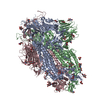

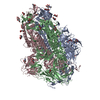

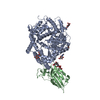

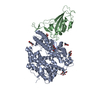

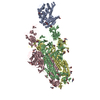

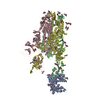

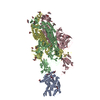

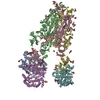



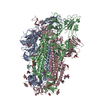

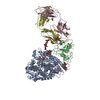

 homo sapiens (human)
homo sapiens (human)